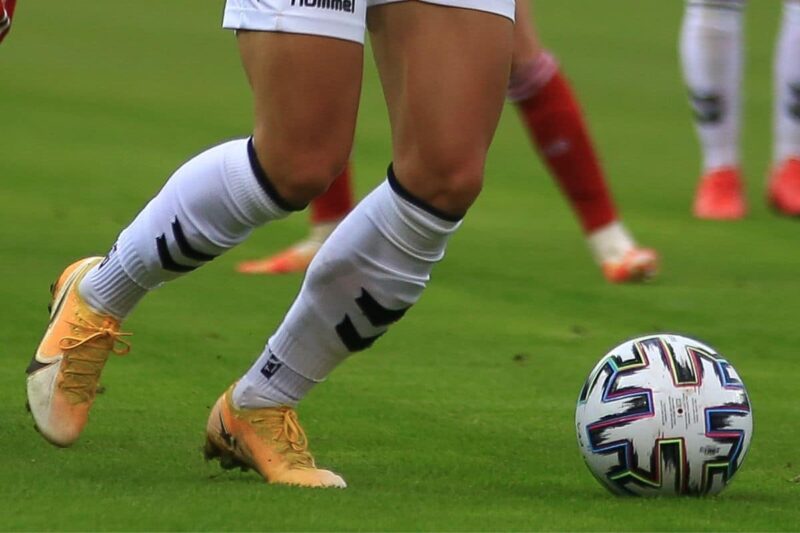Whether you are a seasoned soccer player, a newbie, or a soccer parent who wants their child to be protected on the field, you need a pair of shin guards. And you need to know how to size shin guards to find the right pair for you.
Shin guards are mandatory in many soccer leagues and tournaments. They do an excellent job of protecting your shins from the impact of a ball or a cleat so you really don’t want to. be without them!
But how do you choose the right size of shin guards? Here’s how to find the perfect pair of shin guards that fit you or your child like a glove! (A leg glove!).
Let’s kick off!
Table of Contents
- 1 What are shin guards and why do they matter?
- 2 How to measure your leg for shin guards.
- 3 What is the size guide for shinguards?
- 4 How should shin guards fit?
- 5 Tips for Finding the Right Fit
- 6 Watch and learn: Small or big shin pads – which size should you get?
- 7 What are the different types of shin guards?
- 8 Which shin guards do I need?
- 9 What sizes are kids shin guards?
- 10 What sizes are adult shin guards?
- 11 What sizes are women’s shin guards?
- 12 How do you size youth or children’s shin guards?
- 13 Shin guard sizing FAQs
- 14 Do you wear socks over shin guards?
- 15 What socks should I wear with shin guards?
- 16 How to look after your shin guards.
- 17 The final score.
- 18
- 19 This article was written by
What are shin guards and why do they matter?
Soccer shin guards are crucial because they protect your shin bones from injury, hard tackles and collisions with other players.
Without proper protection, soccer players are at a greater risk of sustaining serious injuries as well as painful bruising and cuts.
The type of shin guards you wear can also affect your performance on the field.
If your shin guards are too big or small, they can be distracting and uncomfortable while you’re running and kicking the ball.
How to measure your leg for shin guards.
The best way to measure your shin for shin guards is to measure your shin length using a flexible tape measure.
Measure the distance between the bottom of your knee joint and the top of your ankle bone, just above where your foot and ankle bends.
This measurement will give you the length of your lower leg.
If you’ve got your eye on a pair of shin guards with straps, you can also wrap the tape measure around the widest part of your calf muscle to measure the circumference of this area.
Once you have these measurements, you can use a sizing chart to find the right shin guard size.
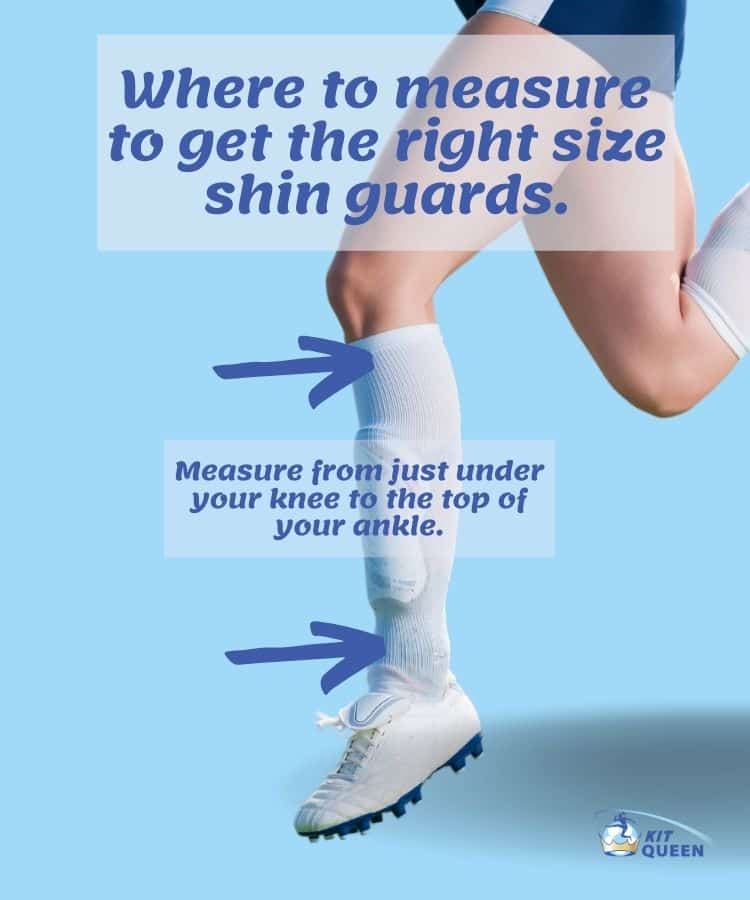
What is the size guide for shinguards?
Here’s a handy size guide chart for adults and youth players.
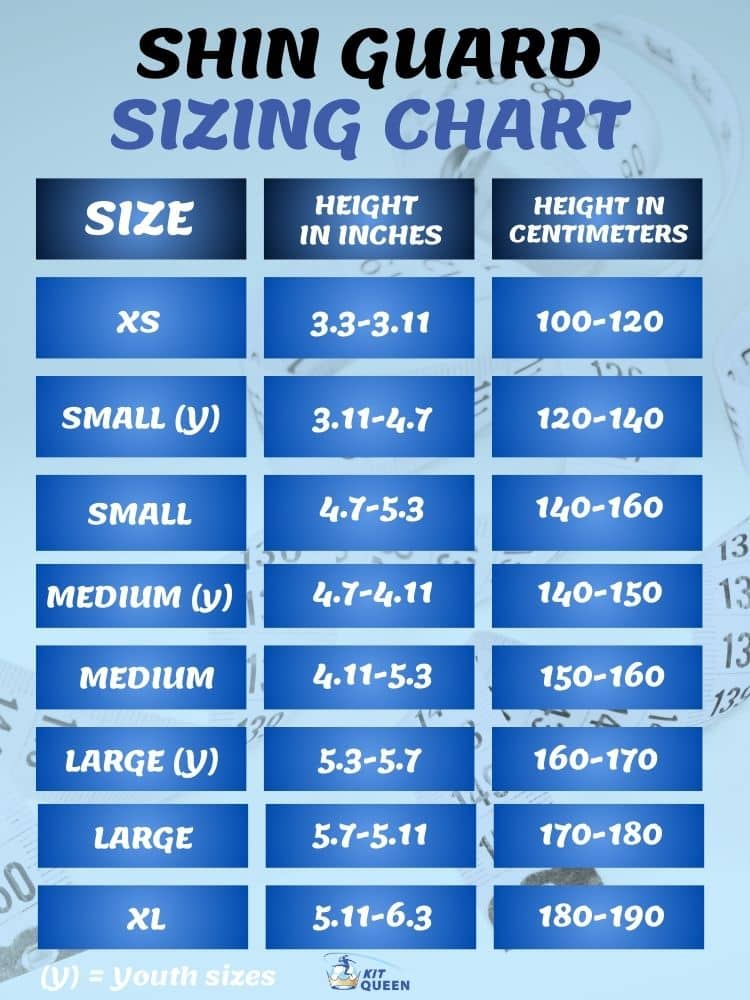
How should shin guards fit?
While choosing the right type of shin guards is essential, knowing how to wear shin guards properly is equally important to ensure maximum protection and comfort.
Here’s how to find your perfect fit.
#1 Know your size
Before buying shin guards, measure your calf’s circumference and check the manufacturer’s size chart.
Shin guards generally range from XS to XXL sizes or based on age.
A tight-fitting shin guard can cause discomfort, while a loose-fitting guard isn’t protective enough.
So, make sure you choose the right size as per your shin height and calf measurement.
#2 The right position
In general, shin guards should fit snugly on your shins, without moving out of place when you play.
They shouldn’t dig into your knees or be too small to cover your shins safely.
A rule of thumb is that they should cover two-thirds of your shin bone.
Make sure to wear your soccer socks and shoes when trying on shin guards, to get a realistic fit.
#3 Try them on
Don’t just buy shin guards based on size or online reviews. Try it on before you buy it to get the perfect fit.
If you’re buying it in-store, bring your soccer socks to try it on.
Walk around, kick a ball or simulate a game to check if the shin guards feel comfortable and protective.
#4 Make adjustments if you need to
If you find that your shin guards are slipping, sliding, or not providing enough coverage, you can adjust them.
Slip-in shin guards can be layered with compression sleeves for added support and protection.
Strap-on shin guards can be tightened or adjusted to better fit your leg.
And if you’re still not finding the proper fit, try different brands and styles until you find one that works for you.
Tips for Finding the Right Fit
When trying on shin guards, make sure they fit snugly against your leg. You don’t want them to move around or slip down while you’re playing.
If you can, try the shin guards on while wearing your soccer socks and shoes to ensure that you get the best fit.
If you’re still unsure about which size to choose, consider selecting the larger option because you can always adjust them with straps or wear thicker socks.
Watch and learn: Small or big shin pads – which size should you get?
Here’s a great video that shows you the pros and cons to choosing big or small shin pads to protect your shins when playing soccer- which shin pads should you choose?
What are the different types of shin guards?
When sizing your shin guards, it’s important to understand the different types available to help you pick the correct size for you.
Which ones you choose are really down to personal preferences and we use a real mix of all types here at Kit Queen.
The most common types of shin guards are slip-in shin guards, stirrup shin guards, and ankle shin guards. Here’s the info you need know about each one.
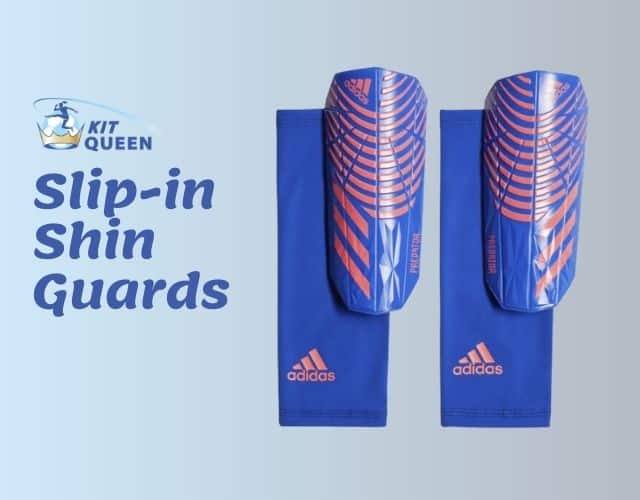
#1. Slip-in Shin Guards
Slip-in shinguards are the most popular type among soccer players because they’re easier to put on and take off!
These shin pads are lightweight, easy to slip on and are ideal for beginner players as they’re smaller and easier to get used to.
Slip-in guards are made of foam or carbon fiber and held in place by a sleeve or compression sleeve. (Some us just keep them in place with our soccer socks).
We love these because they don’t have those velcro straps that go around the back of your calf – we find they don’t always reach!
One of the things we don’t like about the style of these guards is that they tend to slip and move around during play, which can be annoying in a match!
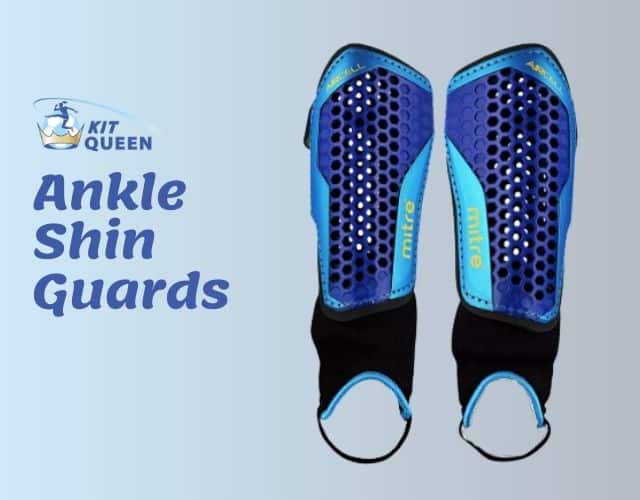
#2. Ankle Shin Guards
If you’re looking for more coverage and extra ankle support, ankle shin guards are a great option.
This type of shin guard have extra padding that wraps around the ankle and provides both ankle and shin protection. Some have elastic stirrups that go under your feet or heel ski-pants style to keep them in place.
They’re ideal for players who are at high risk of ankle injuries or are already recovering from one.
These guards are bulkier than slip-in guards and can make putting your cleats on harder, but the added protection from kicks and nasty bruises is worth it.
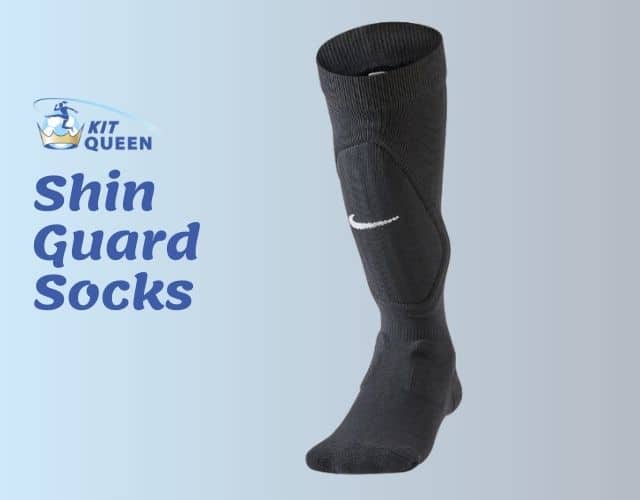
#3. Shin Guard Socks
Shin socks are the perfect combination of form and function and are a good choice for younger players.
They are soccer socks made from a soft, stretchy material that wraps around the shin to protect it. The shin guard is built into the sock, forming one piece. They’re great at staying in one place during a match.
Shin socks are ideal for players who want coverage without the bulk of traditional guards or littler players who don’t have to worry about positioning their guards correctly.
They can also be customized! So are a great opportunity to show off your individual style!
Which shin guards do I need?
The key to finding the perfect pair of shin guards that will give the best protection for you is to consider what type of player you are.
Are you a speedy winger who relies on quick footwork? Or are you more of a bruiser in the midfield, ready to go in for a tough tackle at a moment’s notice?
Once you identify your playing style, you can start narrowing down your options.
From there, it’s all about finding a pair that feels comfortable and doesn’t limit your movement on the pitch. Trust us, once you find the right pair of shin guards, you’ll wonder how you ever played without them.
What sizes are kids shin guards?
For kids, the recommended shin guards are smaller in size, compared to those of adults.
They typically range from 7 inches to 8 inches in length, and 3.5 inches to 4 inches in width.
Depending on the brand, these sizes may slightly differ.
A piece of advice is to ensure that you measure your child’s shin, and choose shin guards that are a bit longer and taller than that measurement.
This way, you can ensure that the little ones are safe and comfortable while playing – and growing!
What sizes are adult shin guards?
For adults, as you would expect, shin guards are bigger in size than those of kids!
They typically range from 9 inches to 10 inches in length, and 4 inches to 5 inches in width.
But the size that will fit you will vary depending on your height and weight. You may need to go for a bigger or smaller size than the standard recommendation. That’s why it’s so important to measure your legs!
Different brands come with various types of shin guards, so it’s good to try them on before buying any so that you get the most fitting and comfortable shin guards for you.
What sizes are women’s shin guards?
Many brands today also create women’s-specific or unisex shin guards, made with a more slender design and curved construction that fits the contours of our lovely legs.
These shin guards come in different sizes, ranging from small to large, so it’s important to measure your shin to ensure you get the right fit.
Women’s shin guards are often lighter and slimmer, so you can feel more confident and comfortable playing.
How do you size youth or children’s shin guards?
Whether you are a parent of a budding soccer superstar or a young athlete gearing up for the game, a well-fitting pair of shin guards can make all the difference on the field.
Here’s how to measure youth shin guards to ensure a comfortable and safe fit.
Step 1: Measure the distance between the ankle and knee
The first step to measuring shin guards is to measure the distance between the ankle and the knee just like the diagram above.
This will help you determine the length of the shin guard needed.
Have your child sit down and measure the distance from the top of their ankle bone to the bottom of their knee cap.
Step 2: Determine the type of shin guard needed
There are two types of shin guards commonly used in youth soccer: slip-in and ankle-strap.
Slip-in shin guards are designed to be worn inside a sock and held in place by compression against the leg.
Ankle-strap shin guards have a strap that goes around the ankle to hold them in place.
Depending on your child’s preference and the league rules, choose the type of shin guard that works best for them.
Step 3: Size the shin guard
Now that you know the distance between the ankle and knee and the type of shin guard needed, it’s time to choose the right size.
Most youth shin guards are measured by age and range from small to extra-large.
If your child is in between sizes or on the cusp of a size, it’s always better to go with the larger size.
Step 4: Try them on
Once you have determined the correct size, have your child try on the shin guards!
They should fit snugly against the leg without chafing or rubbing.
If the shin guard slides around or feels uncomfortable, adjust the size or type of shin guard used.
Step 5: Double-check!
Before sending your child onto the field, double-check that their shin guards are securely in place and comfortable to wear.
Check that the shin guard covers their entire shin bone and ask them if they feel any discomfort or pain.
Shin guard sizing FAQs
Do you wear socks over shin guards?
The answer is yes – you should definitely wear socks over your shin guards.
Not only does it help keep the guards in place during the game, but it also provides an extra layer of protection against scrapes and injuries.
If your socks are too tight over your shin guards and compression your leg, some players rip their soccer socks to relieve tension.
But we wouldn’t recommend this expensive hack!
What socks should I wear with shin guards?
So, you’ve got your shin guards strapped on and you’re ready to take on the field, but what socks do you wear?
The answer is simple: soccer socks! I mean, it’s in the name, right?
Not only do they provide an extra layer of protection for your shins, but they also have grippy textures that keep your shin guards securely in place throughout the game.
It’s a win-win!
Plus, with so many fun and stylish options out there nowadays, you can really show off your personality while staying safe on the field.
How to look after your shin guards.
After you have found the perfect pair of shin guards, looking after them is a must.
Rinse your shin guards off with water after every use to get rid of dirt, sweat, and grass stains that can lead to odors, mold, or mildew.
Do not dry them out under direct sunshine or any high heat. Keep them in a dry, cool place.
We also find the ones with ankle guards can be washed in the washing machine too to keep them fresh. Just follow the care label instructions.
The final score.
So that’s everything you need to know about measuring and finding the right size shin guards for you.
The correct fit is essential for shin and ankle protection on the pitch in a way that’s comfortable and gives you confidence in your performance.
Which type of shin guards your prefer is totally down to you.
Just double-check that everything fits correctly before you head out onto the pitch.
We hope this was helpful in making choosing shin guards a breeze! Now get out there and play!
